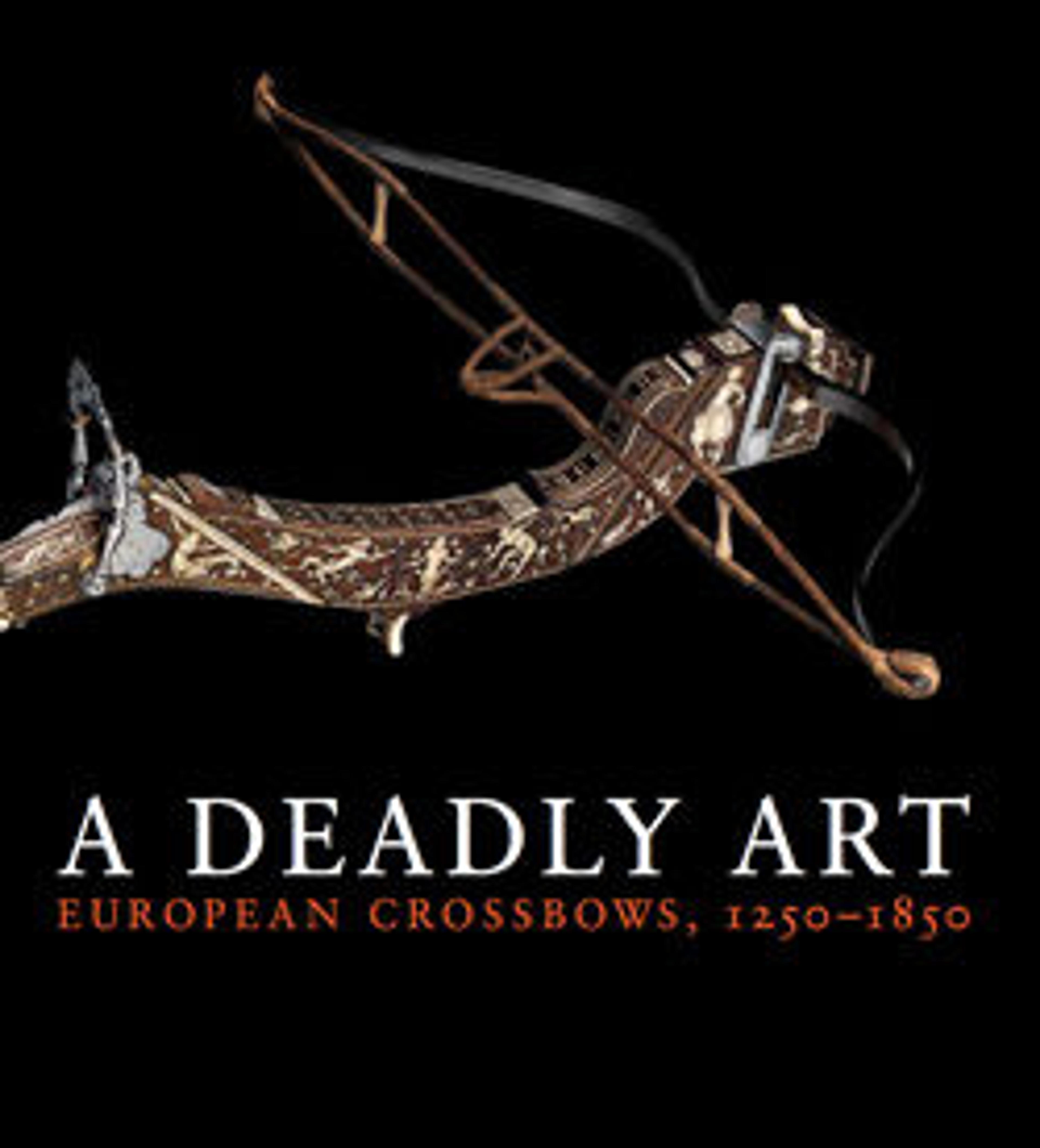Pellet Crossbow
The slender stock of walnut is rectangular in section, straight at the butt, with a deep dip between the bow and release hook. The stock is carved on top with a crouching dragon-like creature and at the front end with a grotesque animal head. The butt tapers slightly and terminates in a turned ebony finial. The bow of polished steel is fitted with a bowstring made of two parallel cords, separated by wooden spacers, and fitted in the center with a basket into which the pellet or stone would fit. The spring-operated release lever is of polished steel and pivots within the stock; its front end is shaped as a hook to receive the basket of the bowstring. The arched rear sight of steel is decorated with moldings and is mounted on the stock behind the release hook; the front sight consists of two vertical steel columns between which a bead originally was suspended.
Pellet crossbows shot small stones or molded clay pellets rather than steel-tipped bolts (see acc. nos. 14.25.1591a–l, .1601a–c) and were used solely for killing fowl and small animals such as squirrels, ermine, or marten. Though they lacked the power and range of conventional crossbows, pellet crossbows could be spanned by hand and their missiles stunned or killed the game without piercing the skin and ruining fur or feathers with bloodstains.
Pellet crossbows were used throughout Europe from the second half of the sixteenth century at least to the end of the seventeenth century. Bows of this particular type and design, with simple but beautifully carved sculptural ornament on the stock, recall the carving on similar examples from the Medici armory, now preserved in the Museo Nazionale del Bargello in Florence.
Pellet crossbows shot small stones or molded clay pellets rather than steel-tipped bolts (see acc. nos. 14.25.1591a–l, .1601a–c) and were used solely for killing fowl and small animals such as squirrels, ermine, or marten. Though they lacked the power and range of conventional crossbows, pellet crossbows could be spanned by hand and their missiles stunned or killed the game without piercing the skin and ruining fur or feathers with bloodstains.
Pellet crossbows were used throughout Europe from the second half of the sixteenth century at least to the end of the seventeenth century. Bows of this particular type and design, with simple but beautifully carved sculptural ornament on the stock, recall the carving on similar examples from the Medici armory, now preserved in the Museo Nazionale del Bargello in Florence.
Artwork Details
- Title: Pellet Crossbow
- Date: ca. 1550–1600
- Culture: probably Italian or French
- Medium: Steel, wood (walnut), staghorn, hemp
- Dimensions: L. 40 3/16 in. (102.1 cm); W. 25 9/16 in. (64.9 cm); Wt. 7 lb. 8 oz. (3,388 g)
- Classification: Archery Equipment-Crossbows
- Credit Line: Gift of William H. Riggs, 1913
- Object Number: 14.25.1581
- Curatorial Department: Arms and Armor
More Artwork
Research Resources
The Met provides unparalleled resources for research and welcomes an international community of students and scholars. The Met's Open Access API is where creators and researchers can connect to the The Met collection. Open Access data and public domain images are available for unrestricted commercial and noncommercial use without permission or fee.
To request images under copyright and other restrictions, please use this Image Request form.
Feedback
We continue to research and examine historical and cultural context for objects in The Met collection. If you have comments or questions about this object record, please contact us using the form below. The Museum looks forward to receiving your comments.
